Ashtanga yoga is a dynamic form of yoga that combines strength, flexibility, and endurance. It is a practice that can bring significant benefits for both the body and the mind.
In this article, you will discover how to start your adventure with Ashtanga yoga, even if you are a complete beginner. You will find tips on how to prepare for your first sessions, which exercises to choose, and how to gradually develop your skills.
Ashtanga yoga – what you need to know?
Ashtanga yoga is a discipline that requires commitment and patience, while offering deep benefits. It consists of a sequence of asanas performed in a precisely defined order, where each movement is linked to the breath. This integration gives the exercises fluidity and dynamism, which is essential for beginners focusing on learning basic positions and mastering the Ujjayi breath technique, which is the foundation of Ashtanga yoga.
Vinyasa, the heart of Ashtanga yoga, combines breath with movement to create a rhythm that guides the practitioner through the entire series, focusing the mind on the present moment. This practice then becomes a moving meditation, which is crucial for beginners to understand how breath coordinates with movement, allowing for a deeper experience of yoga.
On the other hand, learning the proper Ujjayi breathing technique is key to success in Ashtanga yoga. Ujjayi breath helps control the flow of energy, stabilises the practice, and maintains focus and internal balance. Beginners should take the time to learn this technique, allowing them to maximise the potential of their practice. Through Ujjayi breath, which is more than just a technique, a bridge is formed connecting the body, mind, and spirit, opening the way to holistic development.
The first steps in Ashtanga yoga
Starting an Ashtanga yoga practice is an important step towards better health and well-being. Finding an experienced teacher is key. A good teacher will introduce you to the world of Ashtanga yoga, show you the basic poses, and teach you breathing techniques. They will also help tailor the practice to your individual needs and physical abilities so that you can safely develop your skills.
Preparing a suitable place for practice is equally important. The place should be peaceful and free from distractions. It should also be clean and have enough space to comfortably perform all the asanas. Such an environment will allow you to focus on your practice and fully experience the benefits of Ashtanga yoga. Remember, the harmony of the surroundings affects the quality of your practice.
Ashtanga yoga – basic exercises
Ashtanga yoga offers a set of basic exercises that form the foundation of this dynamic form of yoga. These exercises help to develop strength, flexibility, and endurance. Below are the key asanas that every beginner should know.
Sun Salutation A – Greeting the Sun A
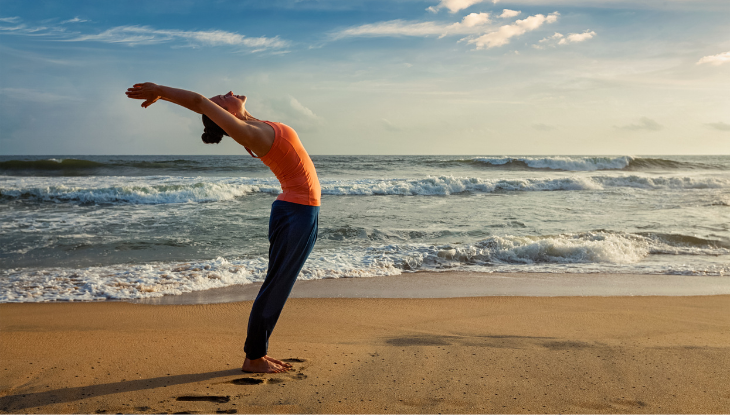
Sun Salutation, or Surya Namaskar A, is not just a single pose, but a whole set that perfectly warms up and stimulates blood circulation. It also brings you closer to mindful breathing and body awareness. You can perform several repetitions of this series at any place and time. After a short session, you will notice a difference in your body and mind. While doing Surya Namaskar A, you move through simple yoga poses, such as Upward and Downward Facing Dog. These transitions allow for smooth execution of asanas. They also provide an opportunity to create a wave-like movement of the spine, which is key to longevity.
During practice, it is important to adjust the exercises to your own abilities. Especially in the chaturanga position, it is good to modify the pose. You can lower your knees to the mat before moving on to the rest of the movement if your arms and core muscles are not yet strong enough. With each day, performing Surya Namaskar A will become easier. This series serves as an excellent introduction to yoga practice, combining physical readiness with mental focus.
Wide-Legged Forward Bend
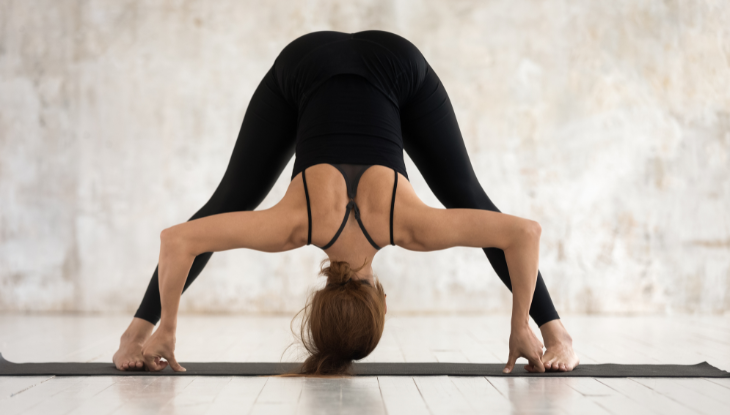
Prasarita Padottanasana is a standing pose that offers adjustable intensity for stretching the back, hips, and hamstrings. The Ashtanga yoga tradition presents four variations of this asana, while also allowing space for creative modifications to the positioning of the hands.
This pose not only strengthens and stretches the body, but also calms the mind, preparing the practitioner for further challenges on the mat. Including Prasarita Padottanasana in your practice is a great way to increase flexibility and improve overall physical condition.
Marichyasana C – Marichi’s Pose C
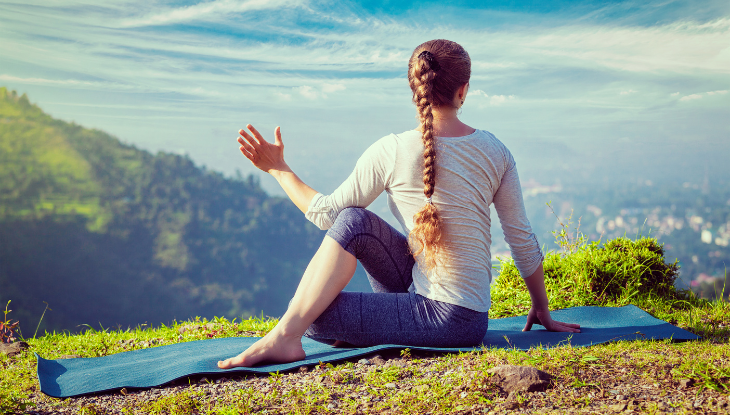
The Sage Marichi’s Pose C is the perfect introduction to spinal twists. In this seated position, you don’t need to focus on leg strength. You can completely concentrate on precisely twisting your torso. Use one hand to support yourself on the floor, and gently push with the other elbow towards the knee.
This will allow you to adjust the position to what is appropriate for your body. Marichyasana C not only develops flexibility in the spine but also helps improve digestion and calm the mind, preparing the practitioner for a deeper yoga practice.
Bound Angle Pose – Butterfly Pose
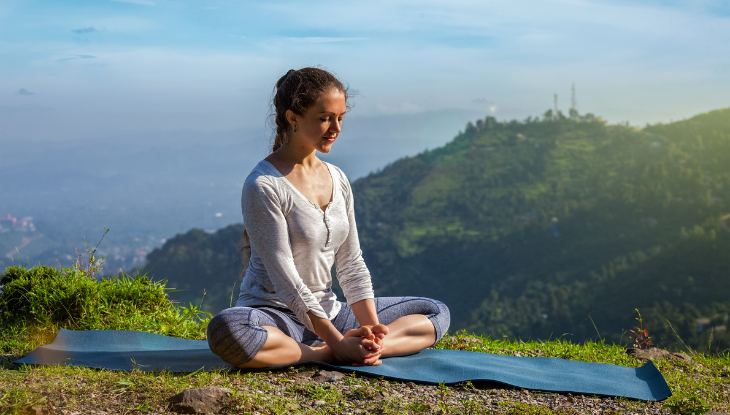
Baddha Konasana, often called the Butterfly Pose, is an excellent exercise for opening the groins and hips. The depth of this pose depends on the practitioner. You can start with a greater distance between your feet and hips. Then gradually bring your feet closer together, and over time, ashtanga practitioners may strive to lean forward.
This pose is perfect for those seeking a way to increase flexibility in the lower body. It can also improve circulation in the legs. Baddha Konasana is not just a physical exercise. It is also a practice that teaches patience and gradual development. It helps to focus on the present moment. It promotes deep breathing, bringing relaxation and calming the mind.
Upward Bow Pose – Bow with Face Up
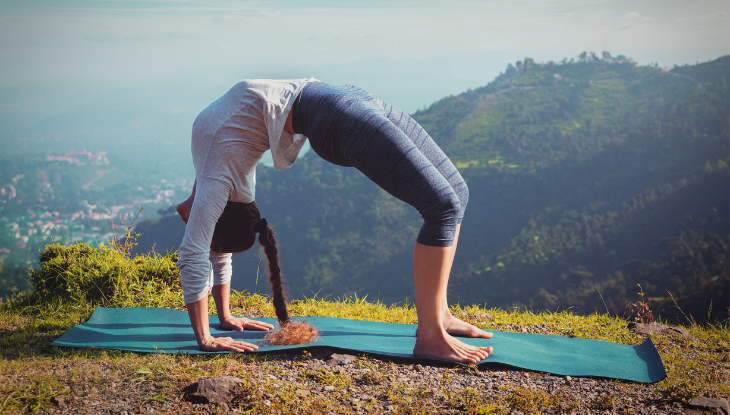
Urdhva Dhanurasana is definitely my favourite pose! It’s an endless journey that requires focusing on every part of the body at 150%. Beginners start with the so-called bridge pose. This allows the hips and thighs to get used to lifting towards the ceiling.
They also learn to transfer energy through their heels. Later on, strong arms come into play. Hands are placed beside the ears on blocks or directly on the floor. One should evenly press through the arms, shoulders, and heels, while opening the fullness of the heart.
This pose not only strengthens the body but also opens the mind. Urdhva Dhanurasana is like a bridge connecting the physical with the spiritual. It improves flexibility of the spine and strengthens the muscles of the legs and arms. It gives a feeling of energy and renewal. It is a position that requires patience and gradual development. Each attempt is a step towards deeper understanding of one’s own body and its capabilities.
How to develop your practice?
Developing a yoga practice takes time and patience. Gradually increasing the difficulty level of asanas is crucial. This allows for safely building strength and flexibility. Over time, your body will indicate when it is ready for greater challenges. It is important to listen to these signals and respect the limits of your own body.
Progress should never be rushed. The practice of yoga is not a race. Everyone develops at their own pace. Regular practice, even short sessions, bring better results than sporadic but intense practices. Consistency is the foundation on which a deeper understanding of yoga and its impact on the body and mind is built.
While developing your yoga practice, it’s also worth experimenting with different styles. This allows for a better understanding of your own body and needs. Additionally, variety can prevent boredom and increase motivation for continued practice. Remember, every day is a new opportunity to discover yourself through yoga.
